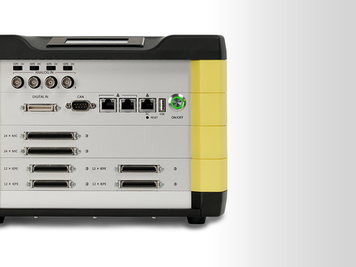Measurement Object
Bombardier BD-700 - 1A10 Global Express
Measurement Set-up
The spherical array was set-up in three different positions, in front, in the middle and in the end of the passenger cabin. The data recorder and the mobile power supply were placed between two groups of seats. The set-up of the system took less than 20 minutes.
As basis of the three-dimensional analysis, a 3D model of the cabin was created using a Faro Scanner (see Fig. 3). Due the lengthened shape of the aircraft, three scanner positions where measured and fitted together into one 3D model. After the measurements the 3D-model was imported to NoiseImage and fitted via a special, patented algorithm. For the analysis the acoustic data was mapped onto the 3D model.















